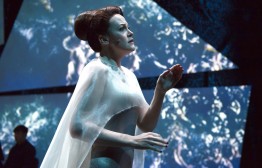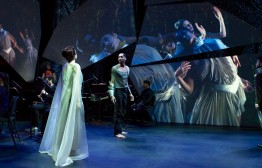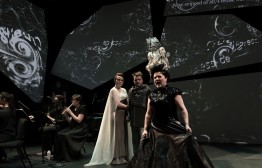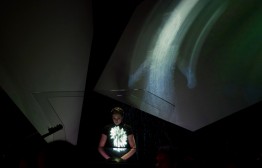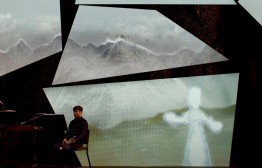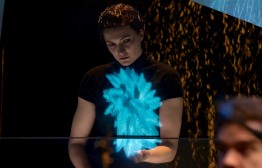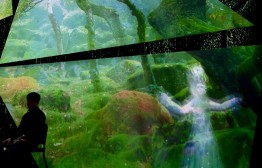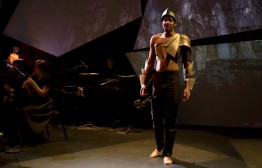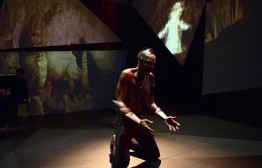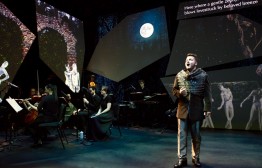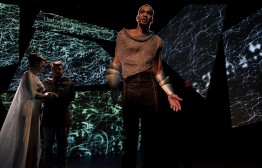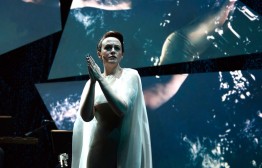Cracked Orlando
The Juilliard School
Center for Innovation in the Arts
Edward Bilous, Director
presents
Cracked Orlando
dramma per multimedia e fractals By Jonathan Dawe
Libretto by Terry Marks-Tarlow and Grazio Braccioli (1727)
Ryan McAdams, Conductor
Edward Bilous, Director
About Cracked Orlando
The Center for Innovation in the Arts provides Juilliard students, faculty, and alumni with opportunities to develop innovative performance technology, collaborate across disciplines, and work on projects that push the boundaries of traditional performing arts experiences. When composer Jonathan Dawe approached me about his Baroque-inspired chamber opera, Cracked Orlando, I realized it was a perfect project for the center to present.
Although the opera had its premiere in 2010, Dawe says that this work, from its inception, involved elaborate visual extra-musical dimensions. It was his dream to re-create, in the 21st century, a dramatic experience that would parallel (or exceed) the awe and wonder that early 18th-century stagecraft must have inspired in its own time.
The story of Cracked Orlando takes place on an enchanted island conjured by the sorceress Alcina. This became our starting point. The notion of fractals (geometric patterns that endlessly repeat, nested within or growing upon themselves, like snowflakes or the complex shapes of clouds) informed this production on every level.
Dance ballets involving sea tritons and deep cave-dwelling demons were choreographed and filmed in the fall. Their images are projected in cubist style and also controlled and fractalized in real time as the performance unfolds. Images of landscapes with lush to harsh terrains are also boldly involved in ways that, upon progressive magnification, reveal entirely new textures, new shapes, and new worlds.
Perhaps our most ambitious deed is the presentation of Alcina herself. During the performance her role is sung in real time in a place other than the theater. Although she is somewhere in the Juilliard building, her images, movement, and body are being captured and re-created on the stage as an interactive avatar. In the operatic world this technology is unprecedented. The notion of roles that can be performed in an intimate ensemble while actually being in physically different locations, perhaps in different countries halfway around the world, is a trailblazing feat with exciting implications.
From a purely musical perspective, Cracked Orlando is a mercurial and complex work, demanding for both vocalists and orchestra. The ornate lyricism and rhythmic propulsion are reminiscent of Baroque music. Dawe’s masterful melodic and rhythmic counterpoint sets the stage for a story that takes place across time and in different dimensions. Much of the original source material comes from Vivaldi, and also from Handel and Porpora. Dawe uses compositional workings based upon fractal geometry. Applied to these borrowed Baroque passages, the original affects of these ancient artifacts are grown, and, in the end, made modern and more meaningful. For this opera the composer engaged the West Coast psychologist Terry Marks-Tarlow, who incorporates fractals into her work as a therapist, to create a significant English-language portion for the libretto. For this she engaged the fractal notion of emotional states that grow throughout the opera based on a Fibonacci series (a sequence of numbers that reveal intriguing mathematical patterns that grow endlessly toward infinity). Through these processes, the asides grow larger and larger until the emotional dimension of the work turns inside-out and, in the end, consumes the opera.
